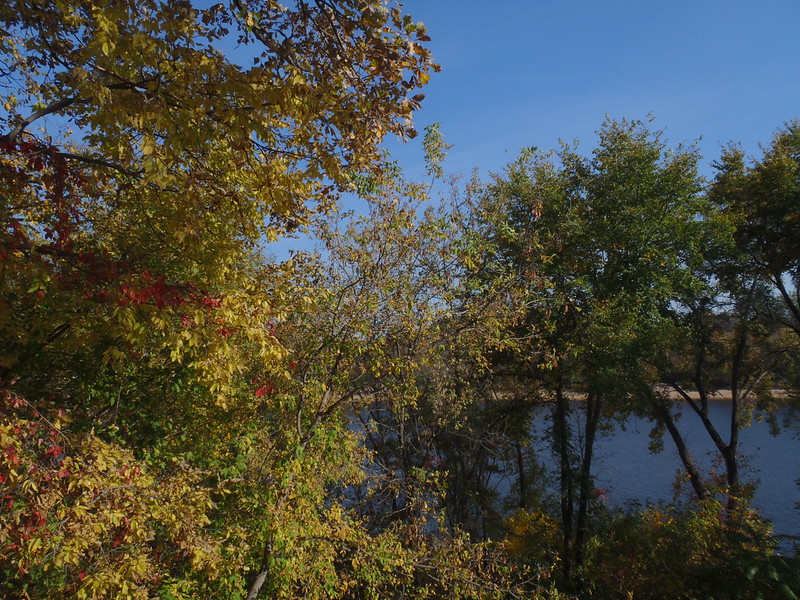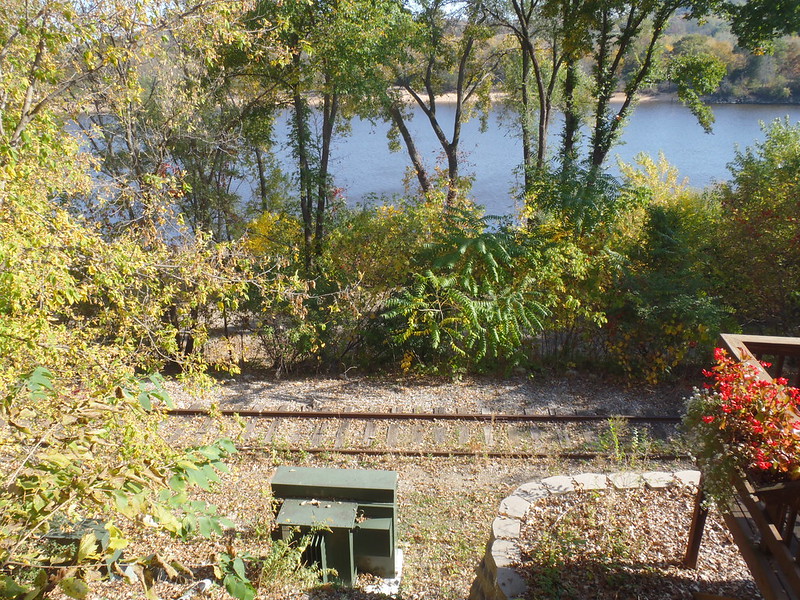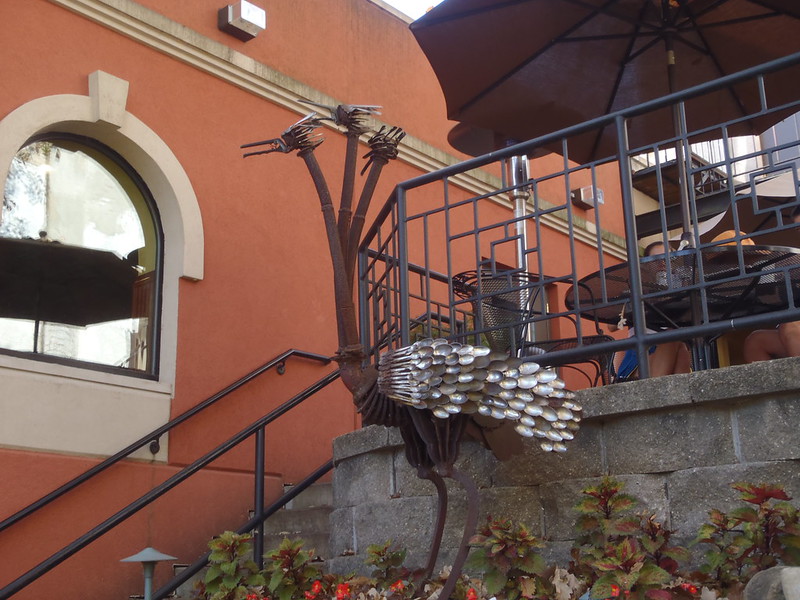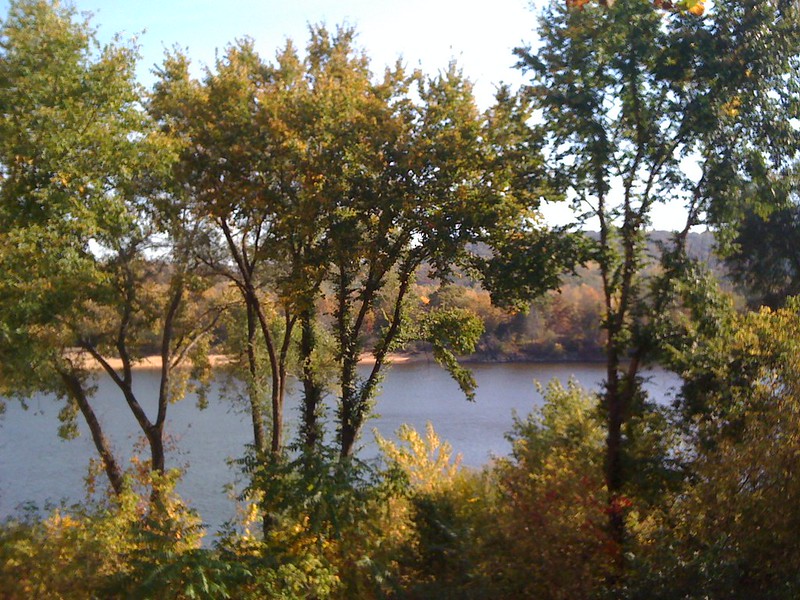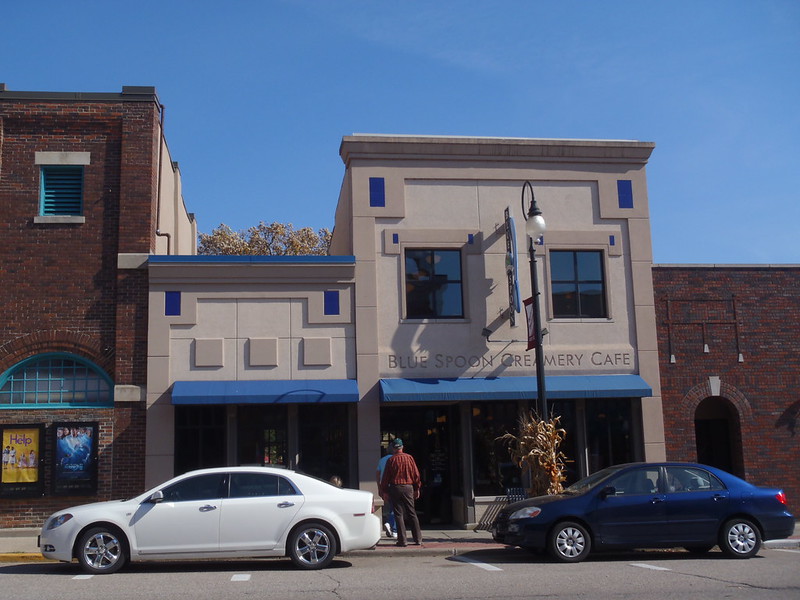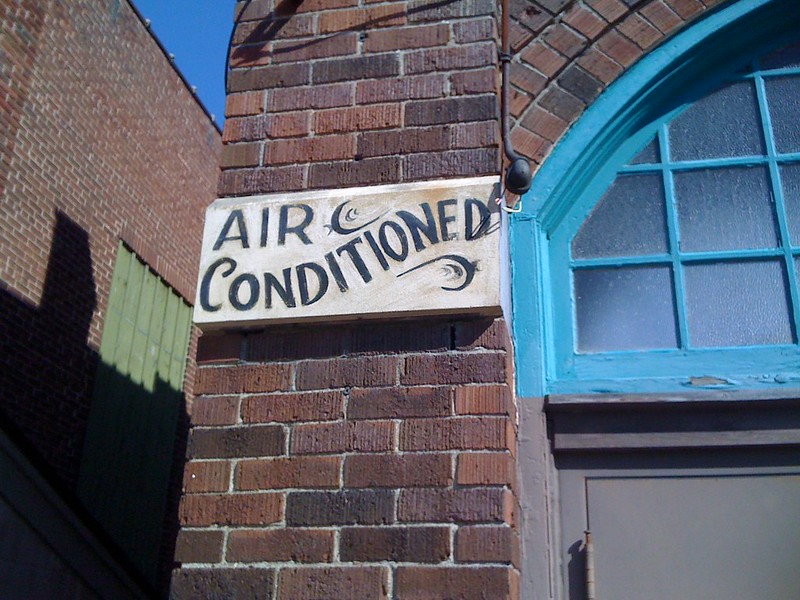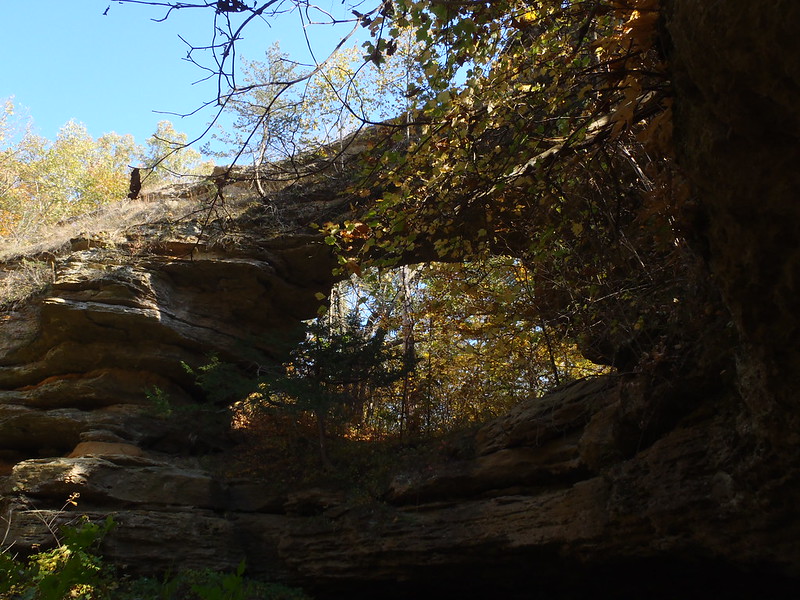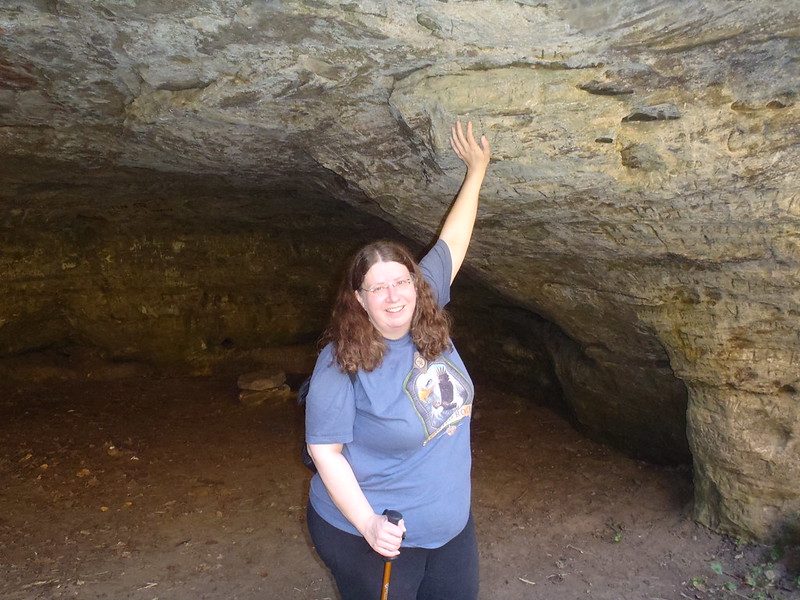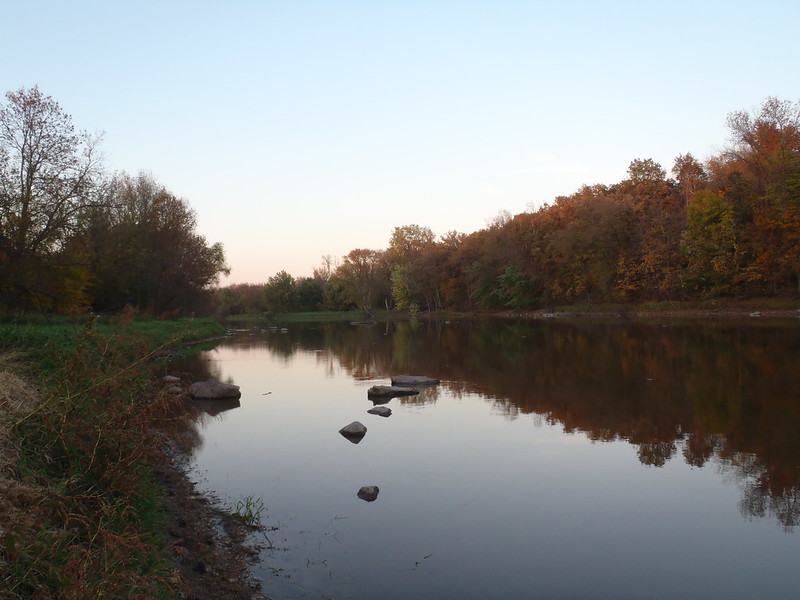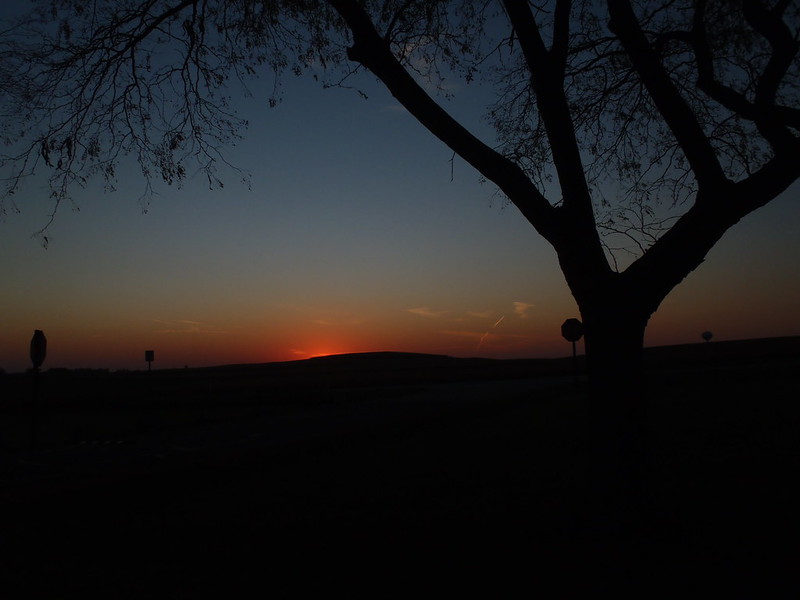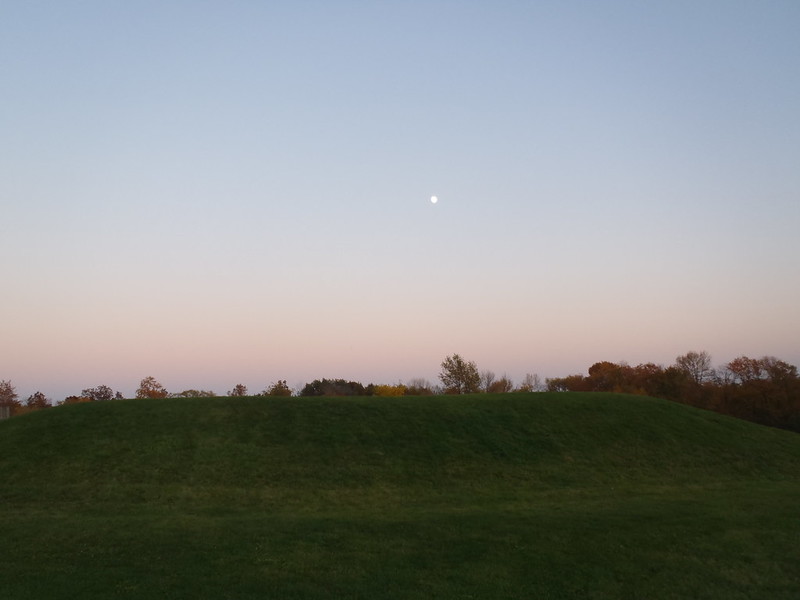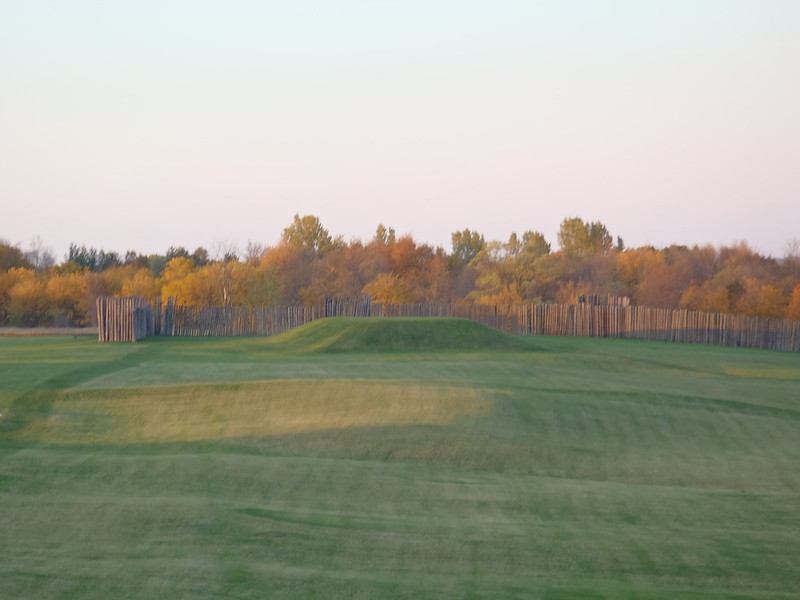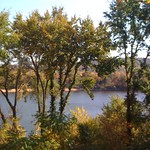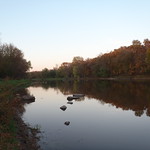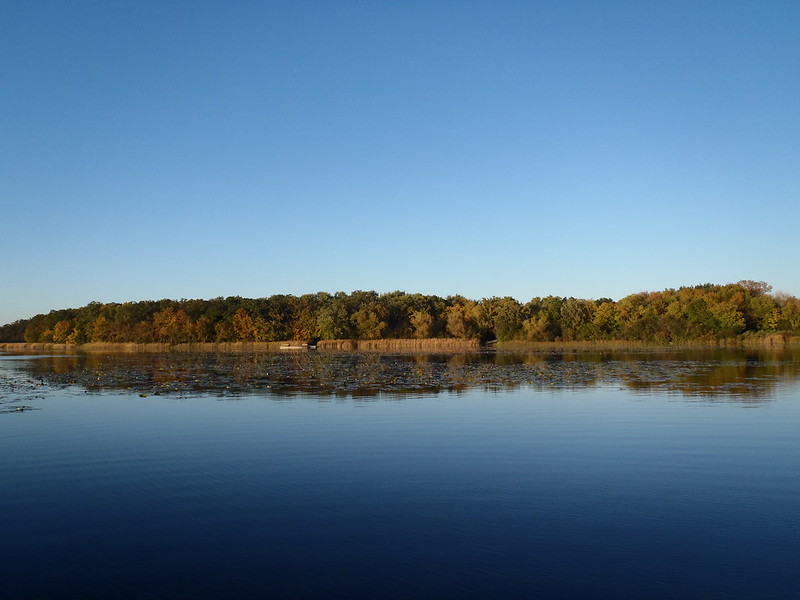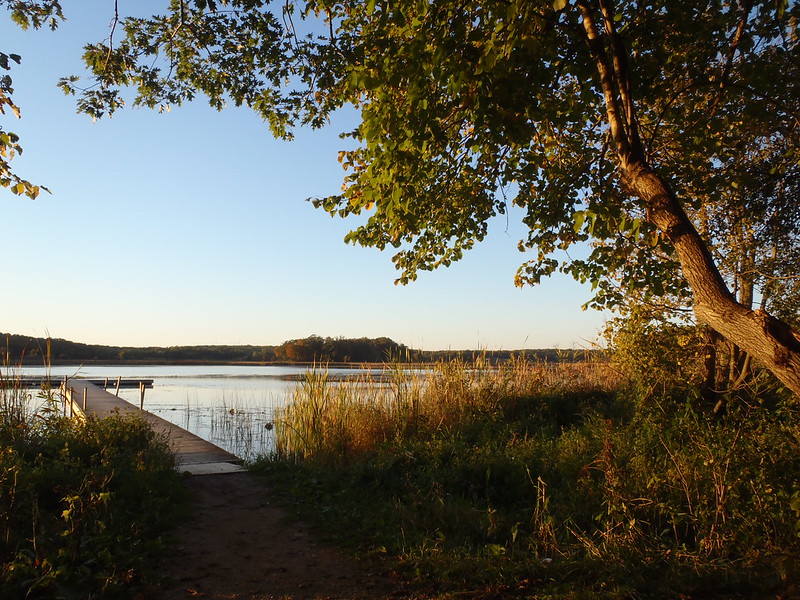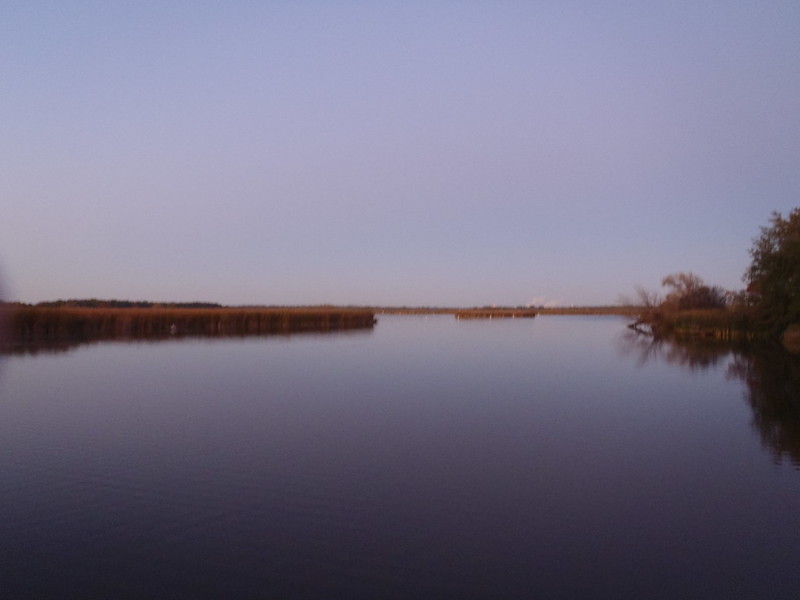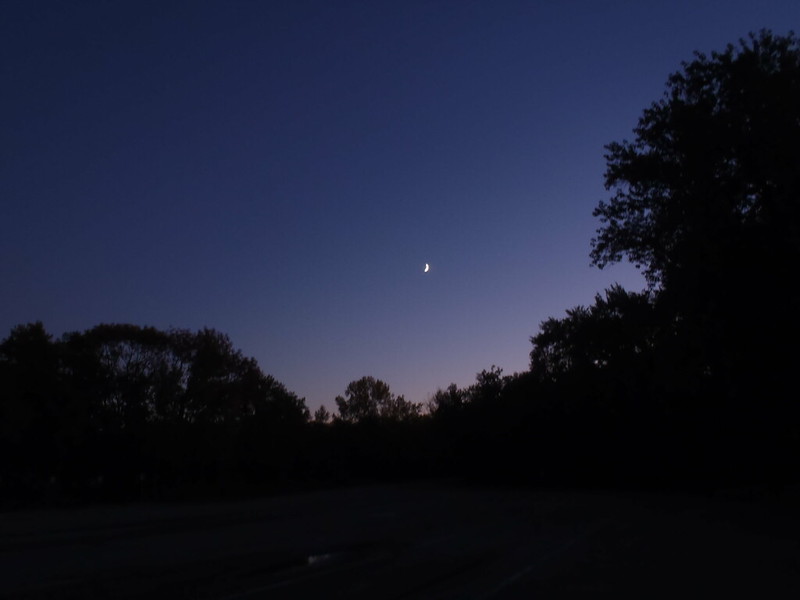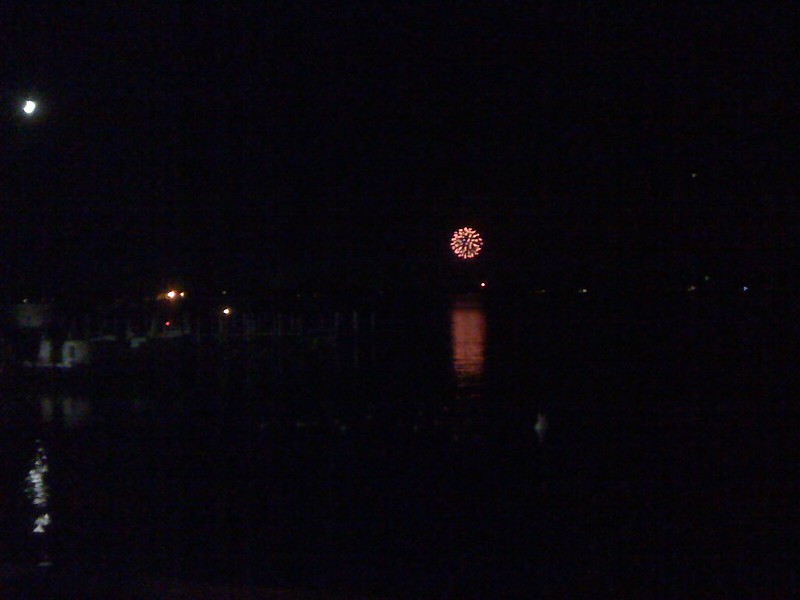More adventures in America’s Dairyland, October 8, 2011
During our first trip to the Baraboo area of Wisconsin, J. bought a $35 state park permit that expires at the end of the year, so use it he must. That’s why we ended up on I94 to Wisconsin again, this time centered on the Prairie du Sac/Sauk City area.
Thanks to Yelp for iPhone, on Saturday morning we landed at the Blue Spoon Creamery Café, where you order and get a number, and your meal is delivered to your table. While J. stood in the short line, I sought the outdoor seating that I’d read about — Blue Spoon has three terraces overlooking the Wisconsin River, and I found a perfect spot on the middle terrace, with lovely views of the river and the railroad tracks.
Railroad tracks?
Railroad tracks run between the lowest terrace and the river, but, judging from the height of the weeds between the rails and the nonchalance of those who strolled by occasionally, they seem to be abandoned — a perfect Rails-to-Trails Conservancy project. Somehow the rails added to the scene’s interest. I wondered when a train last rumbled behind all those buildings on Prairie du Sac’s main street.
After lingering for a long time over breakfast and coffee — who wouldn’t in such a perfect spot and in such perfect weather? — and getting coffee beans to go, we stopped at a tiny farmers market on a lot between two buildings across the way. Because of its size, the offerings were slim but surprisingly varied, from produce and cereals to jewelry and a locally roasted coffee. Which meant more coffee. I have enough to start a small business.
The next stop was next door at the J. S. Tripp Memorial Museum. The Tripp has a large collection of preserved birds, donated years ago by taxidermist Ed Ochsner. It’s probably the closest I’ll get to a golden eagle, which looked like it could have carried off whole villages. It’s mostly feathers, but they make its head look almost as large as a human’s. The saddest pieces were the tiny spotted deer twins and baby ducks.
The museum features a working Royal typewriter with round keys. The proprietor told us the kids try to type on it like they would on a laptop and are surprised by the force and effort it takes to punch the keys. His view is that manual typewriters required so much movement that carpal tunnel didn’t become an issue for those pioneer typists — it’s the small, repetitive motions that cause or exacerbate CTS.
Near the typewriter is a proof press(se) with wood type, along with samples of newspapers partly in English, partly in German. In addition to photos, furnishings, clothing, knickknacks, and the like, the museum, like others of its kind, features Civil War arms and regalia. These exhibits make me think that, if there isn’t one already, there should be a database of history museum and historical societies’ holdings — not just, say, those of the Smithsonian and other large institutions. It sounds like a formidable undertaking, but with Internet communications, digital cameras, and database and other technology, along with agreed-upon standards and willing volunteers, it could be done. It probably comes down to time, money, and value. A formidable undertaking indeed.
As we were getting ready to leave, our new acquaintance pointed out a winery across the river, halfway up the hillside — another reason to consider returning.
Finally we left for the next destination, Natural Bridge State Park, getting lost a few times along the way. We did pass a few cows here and there, but not as many as I might have expected in America’s Dairyland. I’ve seen more in New York and Pennsylvania, albeit in spring and summer.
At Natural Bridge State Park, we saw a middle-aged couple returning from the trail and asked them how far to the bridge. The man answered in time, not distance, saying it was about five minutes away and telling us that they’d learned there’s a cure for everything in plants (signs along the trails indicate how Native Americans used various plants medicinally). His tone was at the advanced end of skeptical. He must not know where aspirin and quinine come from.
An hour plus later of slowly climbing up a long, steep, eroded trail and stairs to an overlook and taking many photos, we were skeptical of his five-minute estimation. After a while, we ran into people evidently on the return trip who told us the bridge wasn’t much farther. I was at a point where I wondered if I could get back down the steeper, narrower parts of the trail, or if I was going to have to be carried or, more likely, airlifted out. Not that this is an especially difficult trail for most people, who strolled past us on their way out, but my knees and ankles don’t appreciate the physics of even slightly steep descents, especially when the trail is narrow, tilted, or eroded unevenly. I was very glad to have worn hiking shoes and to have brought a trekking pole — I needed both.
At last we arrived at the natural bridge at about the same time as a couple coming from the opposite direction. From these people and others, we learned that the trail forms a loop and that we must have taken the longer way around. When I mentioned that my knees don’t like steeper descents, the male half commiserated with me — that’s why they’d taken the shorter, easier way.
The bridge, the largest in Wisconsin, was lovely and impressive in the afternoon sun, but it saddened me to see the silly graffiti carved into it. We’re not talking Shakespearean sonnets, just juvenile “Rick rules” and “Jordan and Jillie” type graffiti — nothing anyone wants to see now, let alone 500 or 5,000 years in the future. I’m sure this has been going on for countless generations.
After a prolonged photo session, we continued down the trail, which descended in several places, although not as sharply. After about 10 minutes or so, we could see and hear signs of the parking lot through the trees. We really had taken the long, hard way — and I’m glad we did, and that I did without complaint. I proved something to myself.
A middle-aged and an elderly woman approached us and asked a few questions. I firmly told them to veer right. I was thinking that if they went left, they would end going a really long way around another loop the trail had led to. J. was beside himself and after they left (veering right) insisted I was wrong. I realized we were talking about different splits and that he was correct — they had gone the wrong way. So I hustled after them, surprised by how far they’d already gone up the wrong trail. They were already thinking of turning back or perhaps had — I’m not sure — and I felt guilty as I watched the older woman gingerly pick her way down. I stayed in front of her so at least I could steady her if she couldn’t make it. I tried to explain my error and apologized profusely. The younger woman said they were starting to wonder and she didn’t blame me — she thought there should have been directions. We had found a sign — as we were returning. All’s well that ends well, and neither I nor the older woman had to be rescued!
Next on the list was Aztalan State Park, an hour and a half away — that is, if you know where you’re going. There were long stretches during which the cellular network disappeared, which made the various map apps useless. We did pass some points of interest, including what appeared to be a church in the middle of nowhere. According to a sign, which J. noticed in passing (twice), it was a church museum. I’m not sure it was open. It’s one of those roadside oddities that might pull you in if you have time and and an interest in the unusual.
I did break J.’s heart by insisting we bypass Rustic Road (Lane?), which might have worked as a route, and might not have. I’m convinced he’s a sucker for marketing and was hoping to find something especially picturesque on a road called “Rustic.” I thought we’d see more frame houses and tidy yards. While the rolling hills aren’t quite the equivalent of Pennsylvania’s Central Alleghenies, overall the look is similar, only neater and more affluent.
As we were passing through a small town that I thought (hoped) had to be close to Aztalan, somehow J. spotted a coffee shop called the Daily Grind. How his radar picks up coffee shops while he’s driving I’ll never know, nor do I want to know. We stopped there, ordered drinks, and crossed the threshold into the connected pottery shop.
AFter a few more miles and false turns. we arrived at Aztalan around 5 o’clock, an hour later than I’d expected. At this time, we could experience this historic site with its restored Mississippian mounds in the waning daylight. First, J. couldn’t resist spinning a wheel to power playback of an educational recording about the site, while I cranked an old-fashioned pump connected to a drinking fountain. I wasn’t thirsty, but was fascinated to witness the result of my labor come out of the fountain and the excess disappear into a drain in the earth. The water had a taste, as water close to the source often does.
It’s not something I think about often, but there is something marvelous about working and seeing the effort tangibly rewarded. As so little is left that requires labor — even the simple task of dish washing for most is delegated to a machine — I wondered if that’s part of why gardening, scrapbooking, crocheting, and other manual arts have surged in popularity in the online age. It’s physically and spiritually satisfying to create something by hand — or to tease water out of the ground. As a novelty, it felt great. If I had to do it for drinking, cooking, cleaning, and bath water every day in every kind of weather, I wouldn’t be so enamored.
We ascended a couple of the mounds, which overlook a strangely featureless landscape. It’s not flat like much of Illinois, but nothing stands out, except the mounds and palisades, and the lines of trees. Only a few visitors were about when we arrived, and the dog walker and kite flyer disappeared before sunset. Not seriously, I wondered if the local sprouts used the mounds for sledding, and J. said, “Until hand reaches out from within the mound . . .”
As the sky grew darker, the colors became less distinct, and the scene more somber. It seemed a good time to leave the mounds and their histories in peace, undisturbed.
More misdirections and an urgent stop or two at gas stations, and we were in Lake Geneva, where we had reservations at the Baker House. The fine weather continued into the evening, and people seemed to be wandering about in search of a party. At the Baker House, the atmosphere was almost busy, loud, and crazy enough for the Great Gatsby. J. was disappointed not to get a table in one of the elegantly appointed rooms, but the enclosed porch, while close to the musicians, was almost calm.
After a little walk near the lake, finally we headed homeward. Although it should have been a two-hour drive here, it took more like three to four, including a half hour nap in the parking lot of a doggy day-care center. A full, full, rewarding, and exhausting day.

